Riding Big Waves in 2012
Our lab recently held a retreat to reflect upon 2011 and to develop a strategic plan for 2012. One of the discussions we held was on the global trends that our work relates to – namely, the trends of increasing challenges to our world’s oceans and increasing support for more collaborative governance in addressing these issues. Wave #1: Renewed Interest in Better Governing Our Ocean Resources
We’ve seen increasing awareness of the threats to the world's oceans and increasing political support for conserving ocean biodiversity and better managing our ocean resources. In 1998, more than two-thirds of the world’s population lived within 400 kilometers of a coast. The world’s population is continuing to grow, from nearly 7 billion currently to a projected peak of 9.22 billion in 2075. These increasing numbers of coastal residents (e.g. by 2025, 75% of Americans are projected to live in coastal counties) are building pressure upon our marine resources.
As people have moved closer to coasts, global fish consumption has reached a record high, now providing 16% of our animal protein intake. Fisheries and aquaculture create livelihoods for hundreds of millions of people around the world and employment in this sector is outpacing world population growth and employment in traditional agriculture. Unfortunately, “the proportion of overexploited, depleted or recovering stocks [has] increased from 10 percent in 1974 to 32 percent in 2008.” UCSB’s Sustainable Fisheries Group is doing fantastic work to assess, model, and improve the management of fisheries around the world.
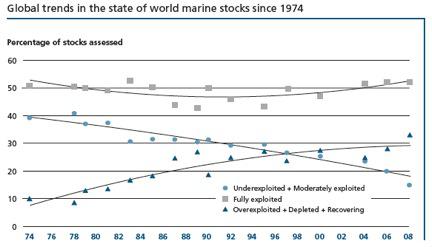
Figure 19 from State of the World Fisheries and Aquaculture 2010
Crucial marine habitats, such as coastal mangroves, coral reefs, and seamounts, have been suffering from the impacts of pollution, trawling, dynamiting, dredging, and other human uses. According to one study, the Caribbean Sea lost about 80% of its coral cover between 1977 and 2002 due to “hurricane damages, disease, bleaching, pollution, and sediment runoff from coastal developments and agriculture, overfishing, and has been amplified by direct damages from boat anchors, fish traps, grounded ships, dredging, collection, and dynamite fishing”.
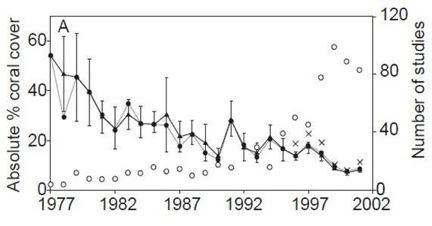
Coral reef cover in Caribbean Sea (1977-2002). Source: Gardner et al., Science 301.
The amount of area being exploited for offshore oil drilling has also increased in recent years. The amount of ocean space under contract for offshore oil development increased “from about 5.5 million sq km (2.1 million sq mi) in 1995 to 9.2 million sq km (3.6 million sq mi) in 2005”.
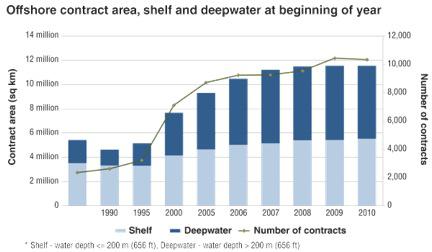
The combined impacts of ocean acidification due to climate change, over-fishing, habitat destruction, resource extraction, pollution, and invasive species introduction are increasingly threatening the health of our oceans.
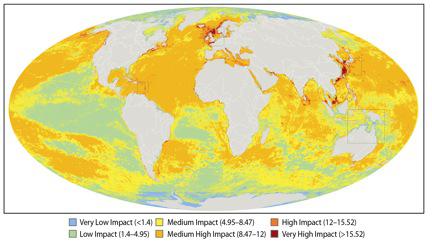
Global Map of Human Impacts to Marine Ecosystems
In response, countries around the world have begun efforts to improve fisheries management, create marine reserves (i.e. marine protected areas), and conduct more thorough suitability analysis of resource extraction activities. These strategies are working to limit the growth of resource consumption to more sustainable levels, but defining what is sustainable, both ecologically and economically, is now a central task for marine spatial planning and policy-development efforts.
Wave #2: Increasing Support for Open and Participatory Government
A second trend is that of technology leveraging and enabling greater transparency, accountability, and participation in governance. Tools such as Twitter and Facebook are widely credited for providing the essential peer-to-peer information sharing and discussion that, in many ways, enabled the 2011 pro-democracy "Arab Spring" movements in Egypt, Libya, and elsewhere. These tools enabled communication and collaboration across distance that was previously impossible through state-sanctioned 1-way media (i.e. television, radio, newspapers).
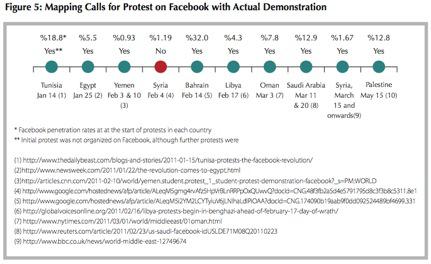
Arab Social Media Report, Vol. 1, No. 2
Increasingly, democratic governments are recognizing the role that technology can play in citizen engagement and are releasing data to provide content for these technologies and tools. In September, 2011, President Obama from the United States and President Dilma Rousseff from Brazil co-chaired the launch of the Open Government Partnership, which committed Brazil, Indonesia, Mexico, Norway, Philippines, South Africa, the United Kingdom, and United States to greater transparency, civic engagement, and support for technologies to enable greater public participation in decision-making. In December, 2011, environment ministers from dozens of countries gathered in Abu Dhabi to discuss how to better gather, share, and use environmental information in decision-making.
Surf’s Up!
Our lab sits at the convergence of these two trends – the increasing recognition to better plan and manage our ocean space, and the increasing support for the data, technologies, and engagement necessary for that planning and management to be participatory and collaborative. Our first decision support tool, MarineMap, helped to enable a more transparent and participatory marine spatial planning process in California and won awards for doing so. The California MLPA experience and other projects have generated new ideas for how to make such a decision support tool even more powerful and useful.
With the support of Jack Dangermond, we have the opportunity to implement those ideas in the form of a new tool, SeaSketch. SeaSketch will build upon the lessons learned from MarineMap and will leverage a combination of new powerful open source and Esri technologies in order to enable more participatory marine spatial planning around the world.
In addition, we are supporting the California Monitoring Enterprise in their work to create a social network-styled approach for sharing scientific information among scientists and with interested stakeholders, which will enable greater transparency around MPA monitoring and management.
We hope our work in 2012 will both help people around these world better understand and engage in the major decisions we face in how we use our oceans.




